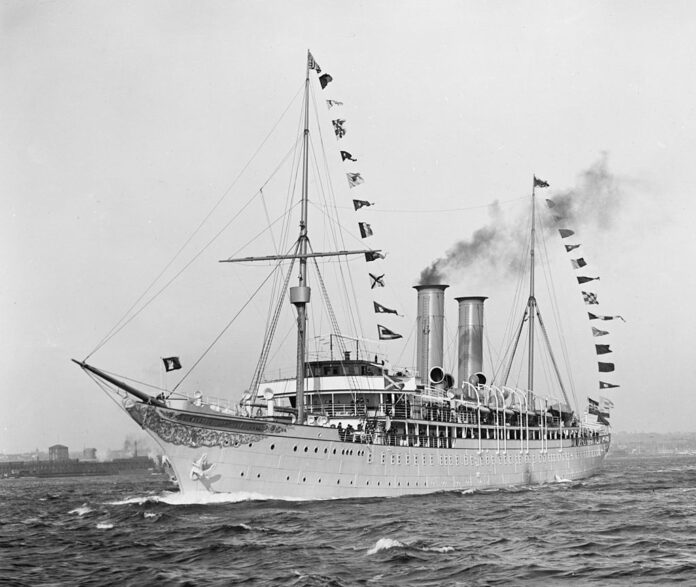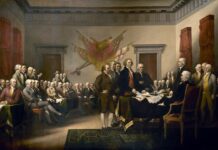On January 27, 2024, M.S. ‘Icon of the Seas’ departed Miami on her maiden cruise. At 248,663 tons, she is the largest cruise ship ever built, five times larger than the R.M.S. ‘Titanic.’ Beyond doubt, she is a marvel of modern engineering, and will lead the cruise industry into a new era. Yet, how did the cruise industry begin in the first place? And how did cruise ships start out as the smallest of passenger ships, only to become absolute monsters dominating the seas?
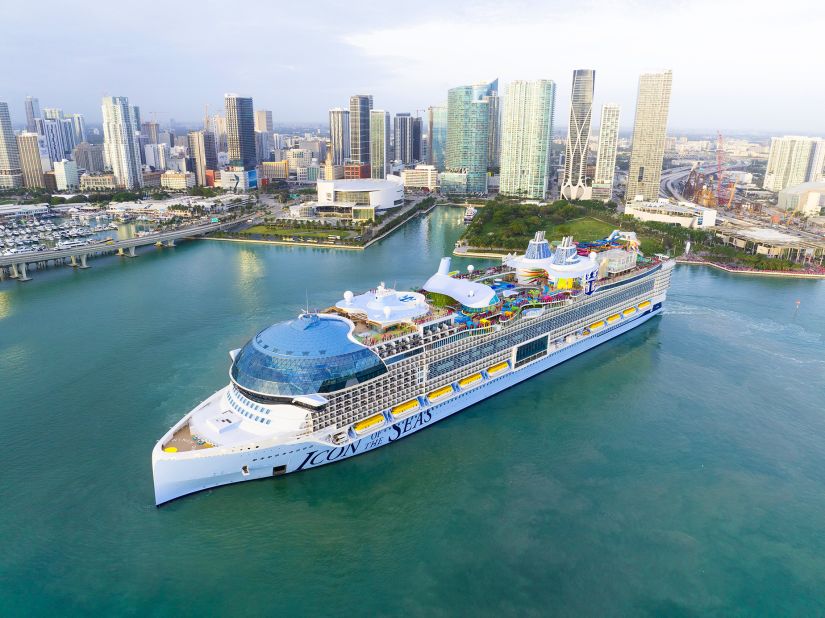
Cruise Ships VS. Ocean Liners
It is not uncommon for ships like the famous R.M.S. Titanic to be referred to casually as “Cruise Ships.” However, ships like the Titanic are not cruise ships, but ocean liners. The difference is that an ocean liner is designed to regularly cross oceans, maintain a scheduled service, and act as a mode of transport from Point A to Point B whether it be for business, tourism, or immigration. Meanwhile, a cruise ship is designed to sail around the coast, and act as a floating resort for vacationers, and then go back to the home port after a few days or weeks. Ocean liners are also built differently from cruise ships. Ocean liners have stronger hulls and are faster to handle the rough ocean, since they will have to go through storms in order to maintain their schedule. A cruise ship on the other hand, has a thinner hull, and is slower since time is not a priority when simply cruising around the coast with vacationers. There are plenty of cruise ships currently sailing around the coasts of the world, but only one ocean liner sailing regularly from one point to another on a schedule, that ocean liner being the R.M.S. ‘Queen Mary 2,’ which sails regularly from Southampton – New York City.
The First Cruise
Cruising traces its origins to 1891, in Germany. At the time, the forefront of German shipping was the Hamburg-America Line, or H.A.P.A.G. H.A.P.A.G. maintained a massive fleet of ocean liners that brought the company much success almost year-round, except for winters. During the winter, passenger traffic was rather low, meaning that sometimes ships would sail less then half-full, or sometimes not sail at all.
Realizing this, the Manager of the Passenger Department, Albert Ballin, decided to send H.A.P.A.G.’s flagship, the S.S. Augusta Victoria, on a pleasure cruise that would see her tour the Mediterranean with wealthy passengers attending and paying a high price to spend the winter away from cold Germany, and in the warm Mediterranean. While Augusta-Victoria was designed with first-class and steerage for immigrants, this cruise would only consist of wealthy first-class passengers who could afford such a luxury. Despite criticism, the proposal was a success, with wealthy and noble individuals from all across Germany attending. The cruise included not only sailing, but also excursions ashore at ports of call all throughout the Mediterranean.
While most cruises today are a week or two long, Augusta Victoria’s cruise was over a month long. Early cruises tended to be far longer than cruises today, largely because the clientele at the time was the wealthy upper-class of the world, including business executives, noblemen, and sometimes monarchs. However, in the coming decades, cruising would become more accessible to the wider public.

The First Cruise Ships
Despite Augusta Victoria’s success, a problem arose. That being that ocean liners, which were obviously not built for cruising. Ocean liners of the time were often designed with three-class. First-class, particularly on German liners, could only be afforded by a wealthy few. Second-class was largely for the emerging middle-class, while immigrants often traveled third-class, or in some cases, a fourth-class known as steerage. Along with this, ocean liners of the time did not have the amenities that modern cruise ships have. There were no swimming pools, sun decks, game rooms, at most there were lounges and smoking rooms. This made ocean liners not well suited for cruising. Yet this would change in 1900…

1900 would see H.A.P.A.G. unveil the world’s first ever purpose-built cruise ship, the S.S. ‘Prinzessin Victoria Luise.’ When compared to other ships of the time, she was far, far different. While the largest cruise ship in the world today is 250,000 tons, Victoria Luise was only about 4,000 tons. Even by the standard of 1900, this was miniscule, with the R.M.S. ‘Celtic’ of the White Star Line holding the title of largest ship in the world, at 20,000 tons. Victoria Luise also had a striking white hull, which would help to keep the ship cool when she sailed to warmer climates. Meanwhile, ocean liners had black hulls to absorb heat on the cold North Atlantic. Another difference was that Victoria Luise had an older clipper bow similar to that of sailing ships, while ocean liners used a more modern ‘knife’ bow. Given that Victoria Luise would be transporting some of the most wealthy and famous people in the world, it seems odd to have her be of such a small size. Why not have her be a large ship filled with amenities, and able to carry thousands of passengers on a luxurious cruise?
The reason is because since cruising was something that only the upper-class of society could afford, it meant that cruises would not carry many passengers, usually only a couple hundred at the most. Another reason for Victoria Luise’s small size is so she can fit into any port around the world. For example, some ports in exotic and isolated parts of the world are too small to house a massive vessel, or there are no docking facilities large enough to accommodate a large ship.

Sadly, Victoria Luise would not last long as a cruise ship. In 1906, she would meet a rather chaotic fate. While cruising in the Bahamas in December near Kingston, a recent volcanic eruption had changed the topography of the seabed, meaning that the depth of the water was different from what was shown on the navigation charts. This led to Victoria Luise’s captain, Captain Brunswig accidentally running the ship aground. While nobody was injured or killed, Captain Brunswig would commit suicide in his cabin after sending a lifeboat ashore to send for rescue. The next morning, the Third-Officer would assist in getting passengers off of the vessel, yet none knew of Captain Brunswig’s suicide. Nearby, was a German naval cruiser, and a French navy training ship, both of which tried to get Victoria Luise off of the rocks she was stuck on, but failed. Victoria Luise, would therefore be scrapped, with her remnants being buried by an earthquake.

This would not be the end for cruising, as soon the Hamburg-America Line would buy an older British ship, the S.S. ‘Scot’, renaming her ‘Oceana.’ This however, would not garner much success, so the Hamburg-America Line decided to convert an ocean liner for cruising. This ocean liner, was the S.S. ‘Deutschland.’ Originally built for service from Hamburg to New York, Deutschland was famous for having broken the North Atlantic speed record, the Blue Riband, however in 1906, she lost this to her British rival, the R.M.S. ‘Lusitania.’ Despite her fame however, she also had something of a bad reputation. While she was fast, whenever Deutschland went at her full speed, her stern would shake so violently that third and second-class spaces were literally rendered uninhabitable for passengers, and parts of her stern allegedly fell off. Looking to redeem their ship, Hamburg-America Line would rename her ‘Victoria Luise’, and would completely revamp her for cruising service. While this did mean they no longer had their flagship sailing to New York, three larger, newer ships would be ordered to be built to replace her.
Victoria Luise marked a new milestone for cruising. With her, new amenities would be added, such as a swimming pool. In 1910, the only ocean liner to have a pool was the R.M.S. ‘Adriatic’ of the White Star Line, making Victoria Luise one of only two ships to have one, and the first cruise-ship to have a pool. Along with this, a new ballroom would be added along with new staterooms, a tea room, and a room to develop photos given that her wealthy passengers would be taking lots when visiting exotic locations. Soon, Victoria Luise would find herself sailing to the Pacific, Norway, all over the world. On one of her cruises, she did the first ever world cruise.
Sadly, this would not last. In 1914, a fire would break out on board her, and while under repairs, World War I broke out. During World War I, she would be left to rot in port until after the war. By the Treaty of Versailles, almost the entire merchant fleet of the German Empire was partitioned between the Entente. However, due to her damage, none wished for Victoria Luise. Therefore, she would remain with Germany, but would no longer sail the world carrying glamorous passengers to exotic locations. She would instead be renamed ‘Hansa’, becoming an immigrant liner, transporting refugees and migrants to New York. In 1924, the USA passed new immigration laws that restricted the intake of immigrants, killing Hansa’s purpose, and causing her to be sold for scrap in 1925.
The Birth of Modern Cruising
Despite the first generation of cruise ships being absolutely gone by 1920, with Prohibition being enacted in the U.S.A., and with society as a whole changing like never before, so too would the cruising industry, with it going from a small niche for the wealthy elite, to a market for all…

To be continued in Part 2 (1920 – 2024)


